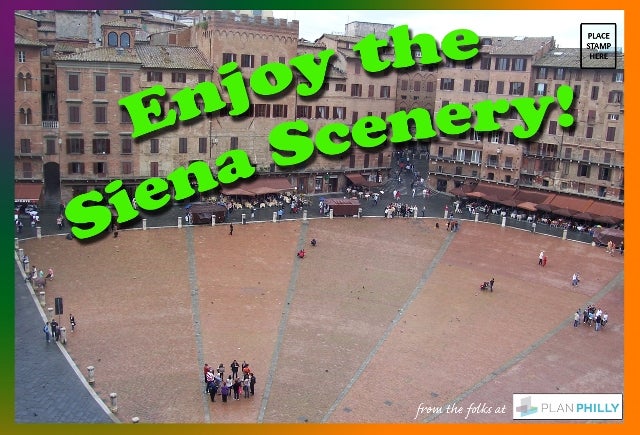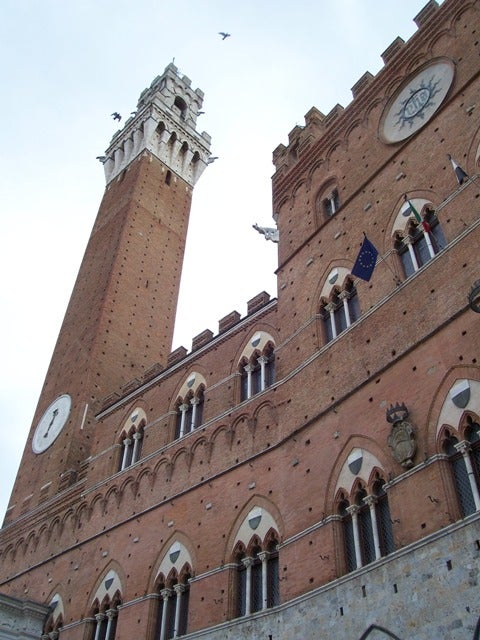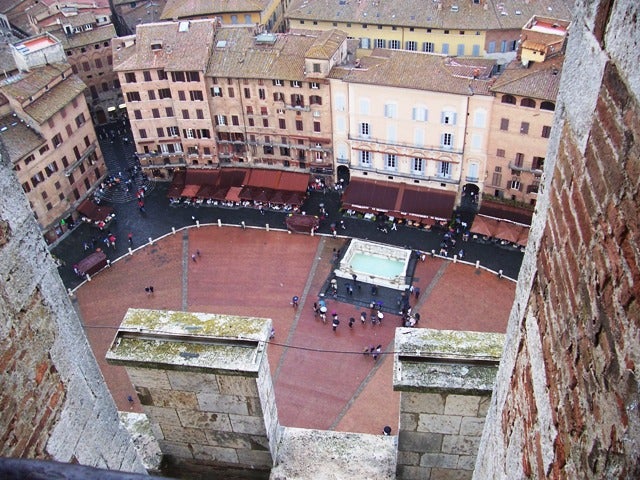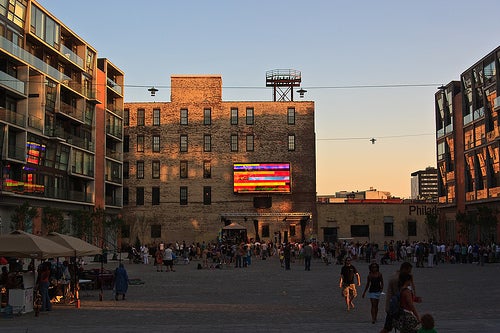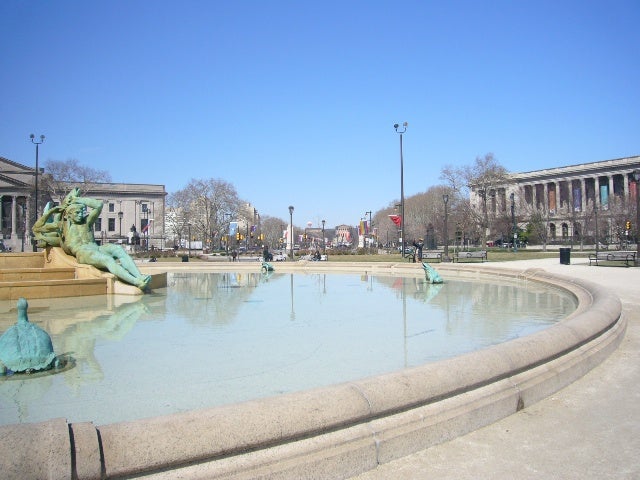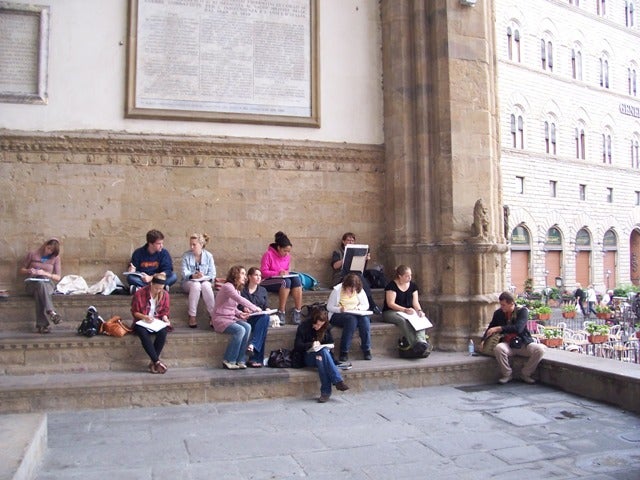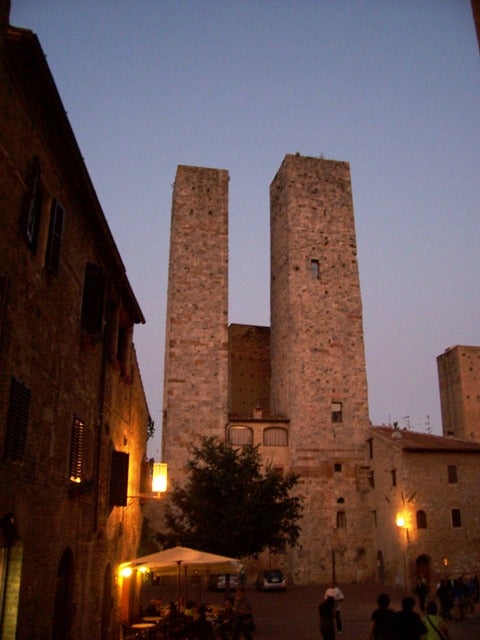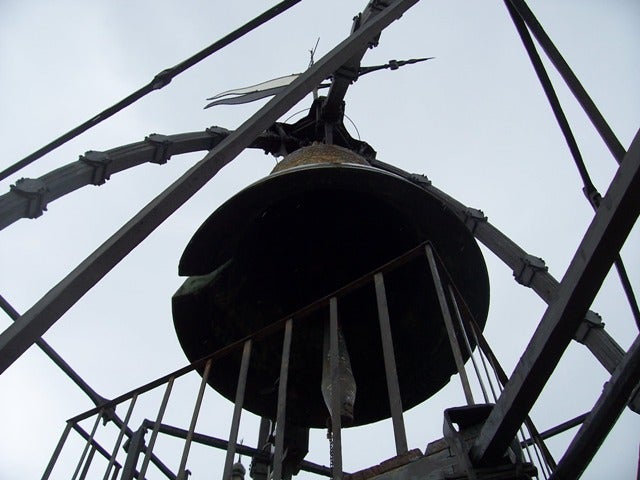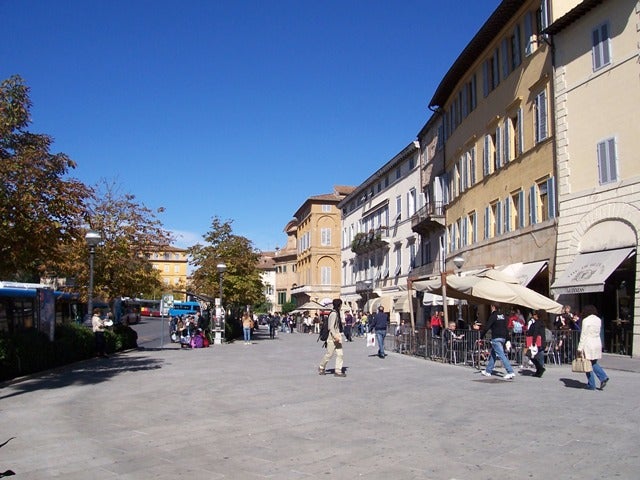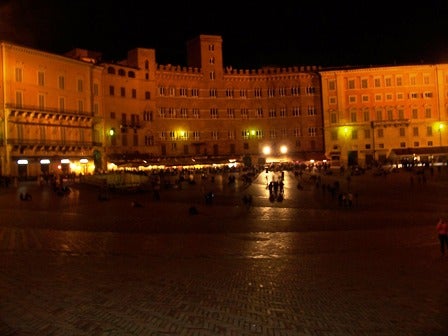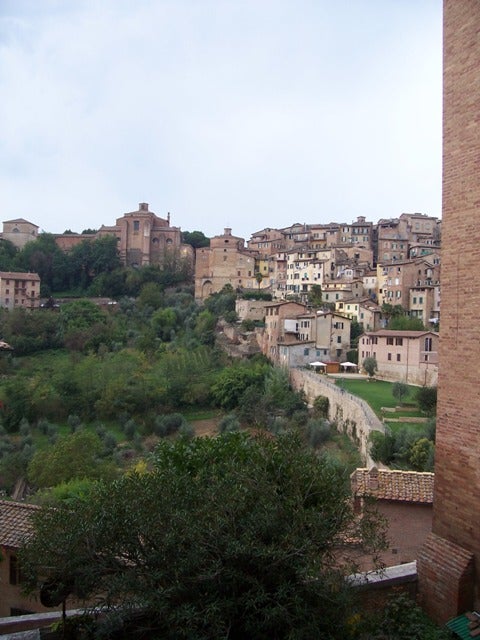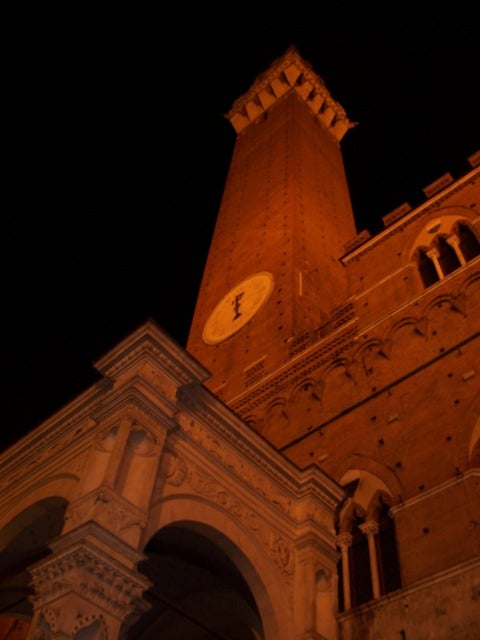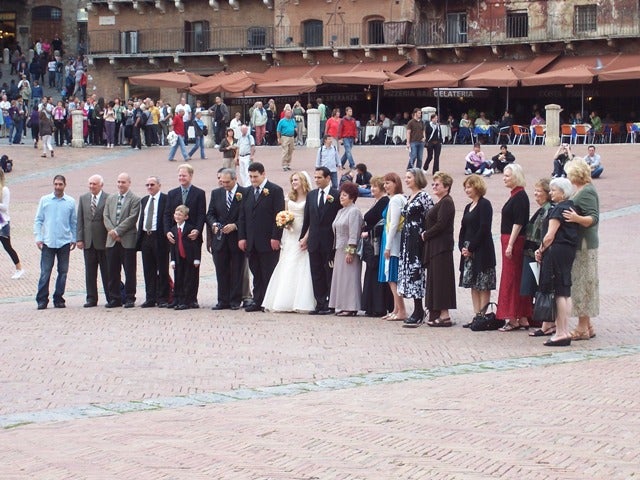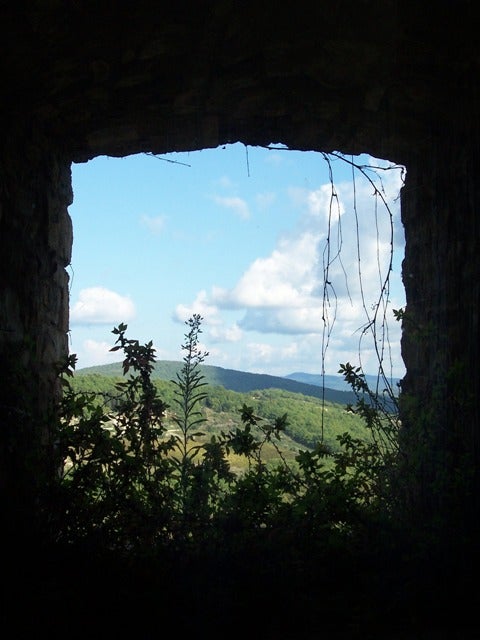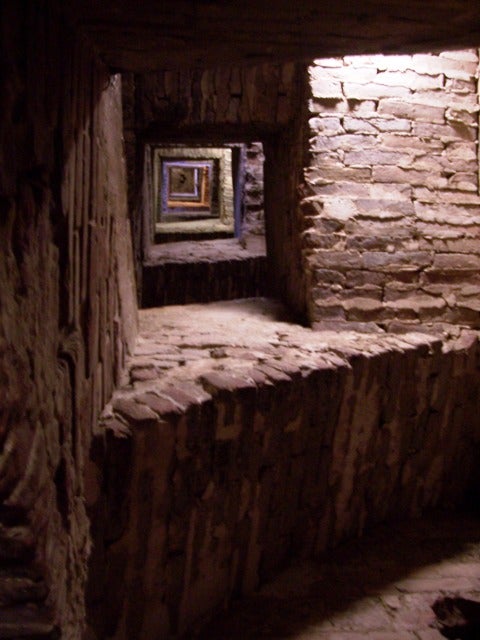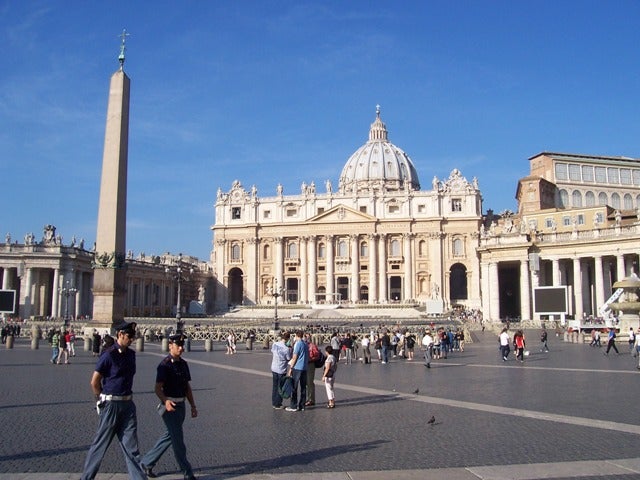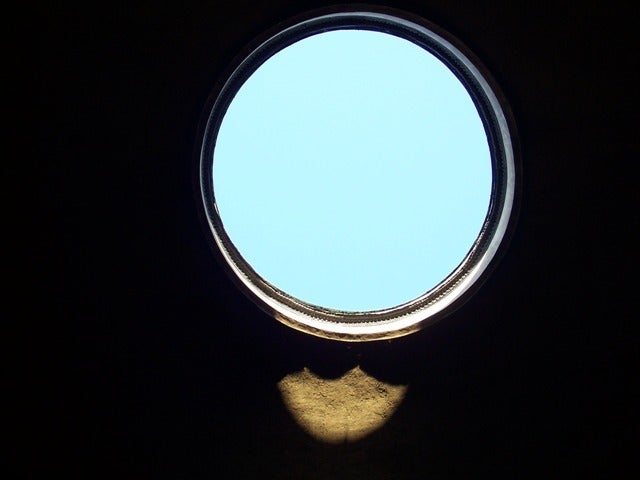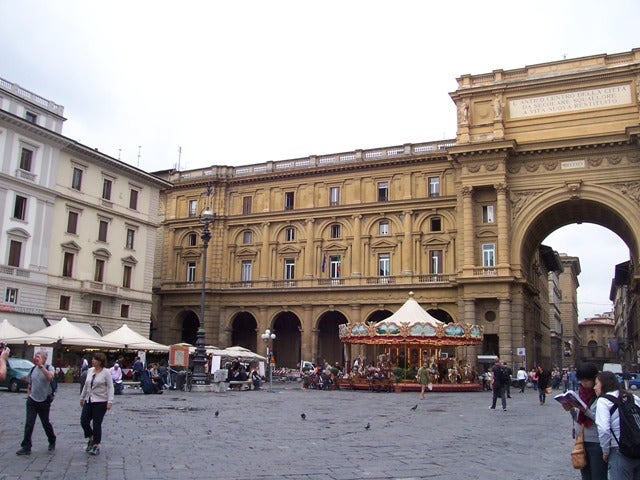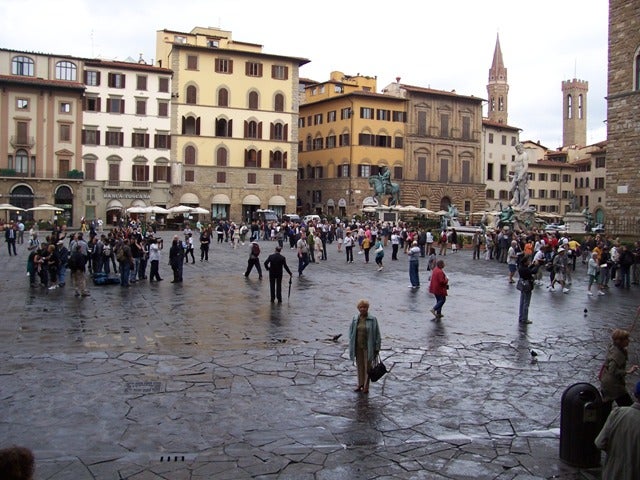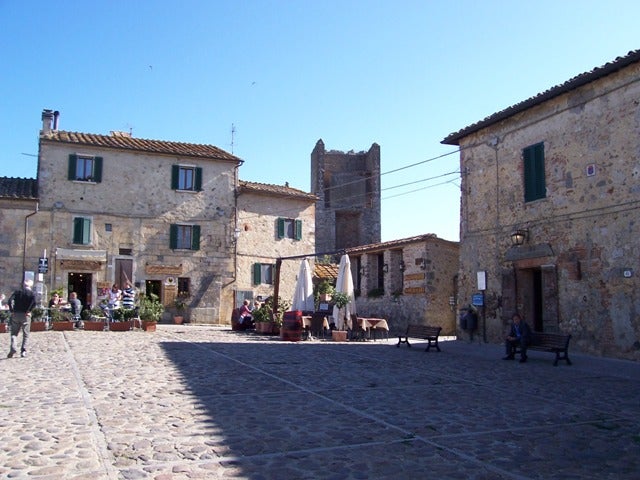Postcard from Italy
By Thomas J. Walsh
For PlanPhilly
Previous postcards: Detroit Part 1, Austin, China, San Francisco, Germany, Pittsburgh, New Orleans, New York City, Boston, San Antonio, Minneapolis, Detroit Part 2, Templehof, Chicago
SIENA, Italy – Generally speaking, a large public space with no street furniture, little ornamentation and nothing but a simple, burnt orange herringbone brick surface is not an inviting venue to stop and talk, mingle with others, sit and have a cigarette, or read. That is, sit down on the bricks. Maybe even to just plop down with your girlfriend for a snuggle. On the bricks. Right out there in the open, yes. Tough to imagine.
But as an American, in this season of World Series baseball, it’s easy if you look around the Piazza del Campo here in Siena, which boasts what might be the most intimate, sensible and charming central piazza in all of Tuscany. There are bars and restaurants and tobacco shops and newsstands ringing the space. It tilts downward, toward a breathtaking civic building and bell tower that has stood since the 14th century, home to City Hall (Palazzo Pubblica) and its accompanying Museo Civico (13th century), with fresco masterworks, oil paintings, subtle sculptures and hand-crafted woodwork that’s relatively new – some of it as recent as the 19th century.
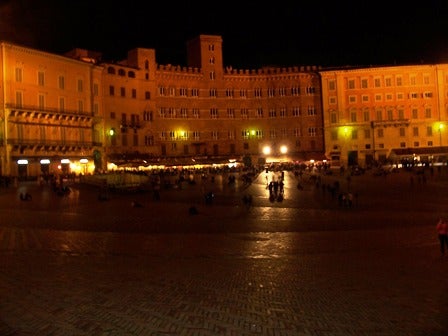
Piazza del Campo at night
The space in front of the Palazzo Pubblica is home base. The shops and trattorias are, at once, the outfield and concourse. The piazza itself is the field. Because a baseball field is not a diamond. Baseball fields are shaped like seashells. Quirky. Some are colorful and beautiful. Some are large and dull. Others have odd angles that become trademarks – the Green Monster, a certain ivy-covered fence, a short balcony in left but not in right. Even the infield is really a square.
Siena’s main piazza is beautiful because it is a downward-sloping seashell echoing the heartbeat of a whole city. It gathers and disperses. It is forever open, changing only with the centuries. A chip here and there, but on the whole, the same.
Maybe kids come closest to realizing the parallel of the piazza and the baseball field. If they still play stickball with a tennis ball, home plate is a manhole cover and first base is Mr. Garafano’s front stoop. A home run is past Jimmy’s older brother’s Nova’s back tires, but only a ground-rule double if it actually hits the car itself.
The fictional film “Field of Dreams,” which was a surprise hit when it was released in 1989, had a field – a talking field, mind you – as a main character and central plot device. The surroundings were the comforts of home in middle America – a farmhouse with a wide-open, inviting front porch, a mystical cornfield, and a long-and-winding road. When James Earl Jones intoned that “people will come,” he was pondering an America where “baseball has marked the time,” which has “been erased like a blackboard, rebuilt, and erased again.”
When you spend a couple of weeks in the Old World, the pride seemingly inherent in the phrase “rebuilding,” a term that long-time Phillies fans used to know all too well, does not seem to ring so true. Staring at medieval masterworks and ancient marble statuary for days on end has its effects. For instance, at the top of Siena’s Torre del Mangia, the 335-foot campanile (or bell tower), there is a plaque commemorating what was surely a Herculean effort between 1325 and 1344 to build it, with its 11-foot thick walls. The take-away is that the plaque – white marble with faded Latin lettering – is itself about 400 years old.
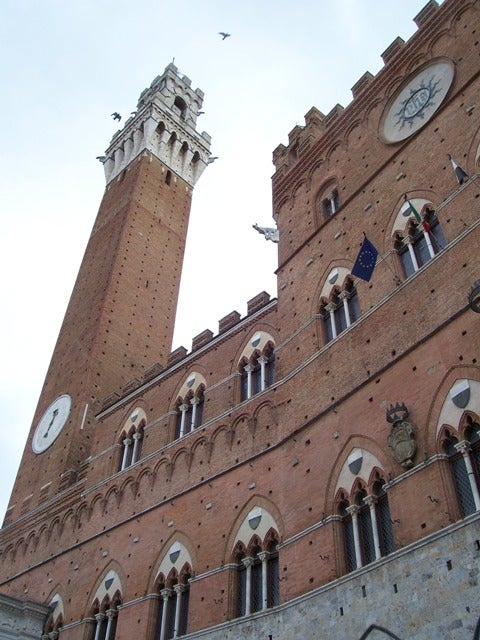
Torre del Mangia
From its battlemented parapet, one can see dozens of people far below, on their backs, baking – or cooling – upon stones and bricks laid in the Middle Ages, reading a newspaper or an engaging novel. One is drawn to the piazza naturally, like a meadow, or a small lake, or a stage. Think “Shakespeare in the Park” on a daily, quotidian basis.
Sipping an espresso in Rome’s Piazza Navona, you watch the buskers play or paint, and observe the tourists snapping digital photos of one another, which they immediately huddle to review. You can go to the piazza to be with your thoughts, or be still and quiet, but never is there a sense of being alone, like you have within the embrace of more familiar grassy parks and public gardens. One doesn’t camp in del Campo. You just be.
Minor points
Back to baseball for a minute: how else to explain the appeal of the minor leagues? They play in smaller, more intimate settings – that’s why. How many minor league teams in other sports enjoy the loyalty and family-based atmosphere that baseball brings? There are a few, sure. But I’m guessing that most people who get to games in Camden for the River Sharks or in Wilmington for the Blue Rocks are going for the park and the outing, and not so much for the baseball.
Siena’s main public square is almost a perfect seashell. It is the Wrigley Field of piazzas.
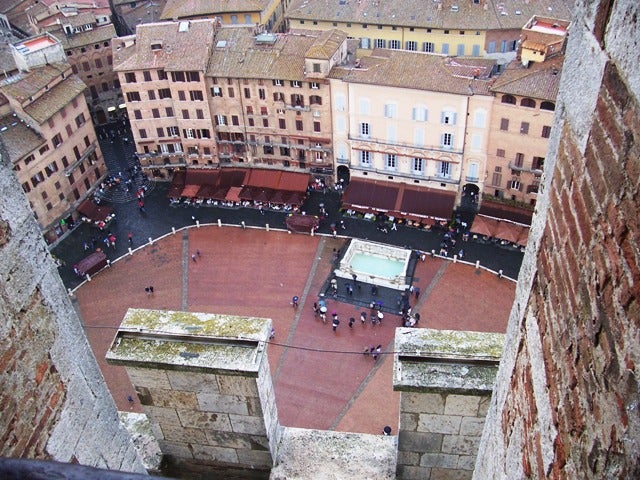
Americans are arguably more nostalgic for baseball fields than they are for baseball players. In fact, the greatest honor a Yankee can achieve, so his fans would have it, is to be enshrined at Yankee Stadium, rather than merely the Major League Baseball Hall of Fame. That there is a new Yankee Stadium replacing the old will seem irrelevant in a few years.
Orioles fans, with their trailblazing shrine to the sport, Camden Yards (just a Ryan Howard upper-decker or two from, ahem, Baltimore’s waterfront and Inner Harbor development) hardly pine for the old Memorial Stadium. Phils’ fans and players were happy to see the concrete donut known as the Vet torn down and be replaced by the jewel that is Citizens’ Bank Park. If they say they miss the old place, don’t believe them.
The differences between ballparks and piazzas are myriad, of course. People mostly drive to the ballpark. The Bank, for all its charms, sits amid a sea of macadam, and access is granted or denied according to income level. Even via public transit, you must pay a fee and make your way there. Piazzas, with some exceptions, are spontaneous and free.
Northern liberty
As it happens, this week’s World Series games can be viewed for free, in a public space – in fact, in a piazza. And it’s a real piazza – kind of – right here in Philly.
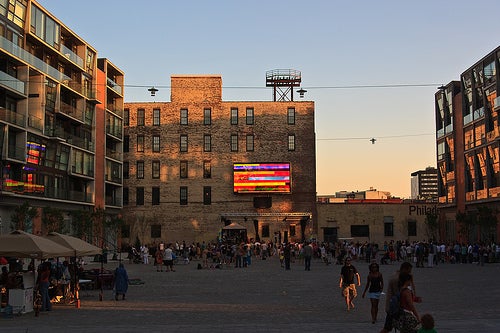
It’s the 80,000-square-foot Piazza at Schmidts, the wonderful new space in Northern Liberties at Second Street and Germantown Avenue inspired by the Piazza Navona in Rome. The Daktronics LED television hanging on the far wall is big but does not overwhelm the space, and the volume is usually just right for conversation (or to get to sleep, presumably, if you’re a non-sports fan and live in one of the apartments above).
But check it out on a sunny Fall day while the weather holds, and see if you can snag a table at the Swift Half. Since being back in the States, it has been the one place where I’ve been able to conjure a small slip back to Italy. There are no marble sculptures or Corinthian columns, but the scalloped bricks of the Piazza at Schmidts bring the old country to life more than most Italian restaurants do.
The new Northern Liberties haunt, with its hip shops and clever entrances, also lacks anything approaching Bernini’s la Fontana Dei Quattro Fiumi (Fountain of the Four Rivers), the immense masterpiece that graces Piazza Navona.
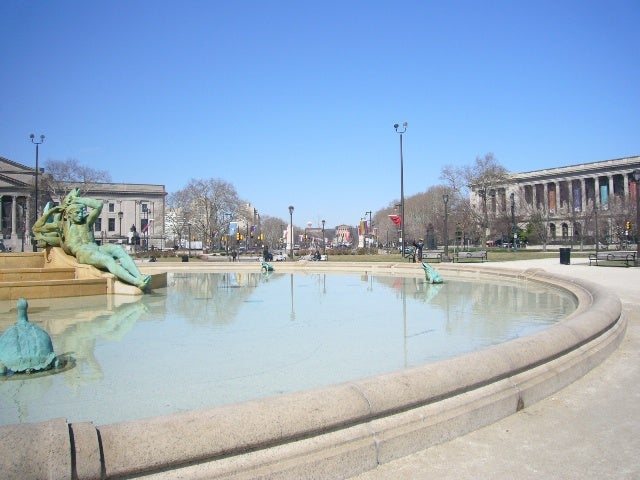
As striking as it is, a replica would certainly be out of place at Schmidts. And anyway, Philadelphia already has its own Bernini-esque fountain, sculpted with similar inspiration, except that it represents three rivers in Philadelphia, not four from around the world (the Nile, the Danube, the Ganges and the Río de la Plata in South America). The Swann Memorial Fountain by Alexander Calder (completed in 1924, it is junior to the Bernini work by 273 years) represents the Delaware, the Schuylkill and the Wissahickon. Its setting is at once beautiful and unfortunate. At the heart of the Benjamin Franklin Parkway, at the center of Logan Circle, it is a diamond in the rough, exhaust-choked autostrade that city officials, led by the Center City District, are trying to eventually bring within striking distance of “pedestrian-friendly.”
While that is still a distant vision, work is underway, with improved lighting and crosswalks already in place. Genuine piazzetta-like small public spaces, such as the new Triangle Park (better known as the home of Café Cret, with its weather-permitting al fresco seating) and Aviator Park across from Logan Circle near the Franklin Institute, are completed. On the drawing boards are substantial upgrades for the Sister Cities Plaza in front of the Basilica of Saints Peter and Paul and Shakespeare Park, in front of the Free Library of Philadelphia. And of course the big one – a new Dilworth Plaza across from City Hall, which is likely much further down the line.
Elsewhere in Tuscany
Piazzas in Florence are generally the most opulent. But even in the Piazza della Signoria, an L-shaped square in front of the Palazzo Vecchio and fronting the Uffizi Gallery, where dramatic statuary dominates (Cellini’s “Perseus with the Head of Medusa”; Giambologna’s “The Rape of the Sabine Women”; Ammannati’s Fountain of Neptune; and a full copy of Michelangelo’s David – all from the 16th century), the square is wide open and roomy.
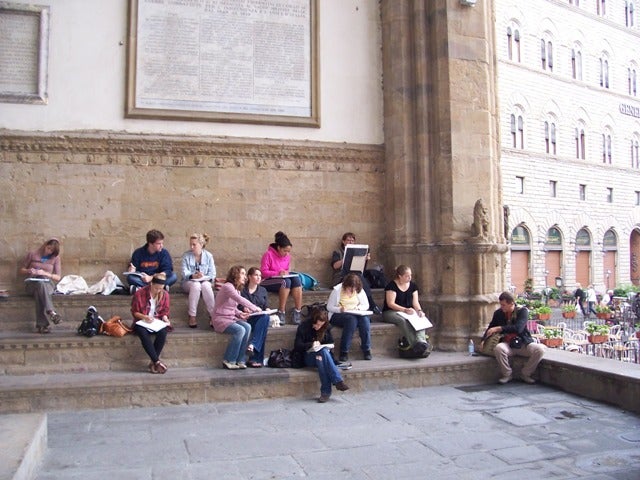
Politicians and lawyers mix with locals running errands at midday in a light rain, dodging occasional panhandlers (who appear oddly uniformed there) and aggressive umbrella pushers. Art students, their sketch pads sprawled on their laps, sit on the Uffizi porch and stare in awe at the imposing Giambologna.
In San Gimignano, an Etruscan village founded in the 3rd Century, the piazzas sweep upward, latching onto one another by the main promenade like a giant step ladder, from the town gates to the top of the hill. San Gimignano used to be known to tourists as the “Manhattan of Tuscany,” owing to more than 70 stone towers. After bombings during the world wars, only 14 remain, but they are impressive, and likely bring the scale of the town into a more proper perspective.
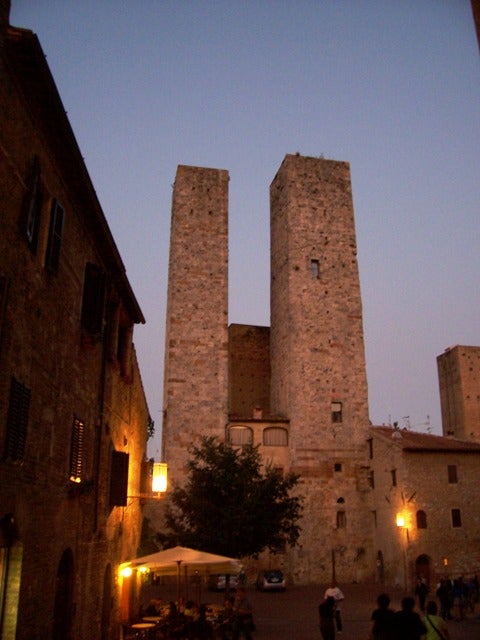
Two of the towers, square and block-like for their entire height, sit at cantilevered angles and have a relationship between them that is eerily reminiscent of the World Trade Center buildings that were felled on 9/11. Coming back from the highest point in the town, in the midst of the third main square, you suddenly see them. Darkened by dusk and accented by subtle lighting, they were especially striking – an entire tour group, most of them Americans, was stopped in its tracks, taken aback by the view.
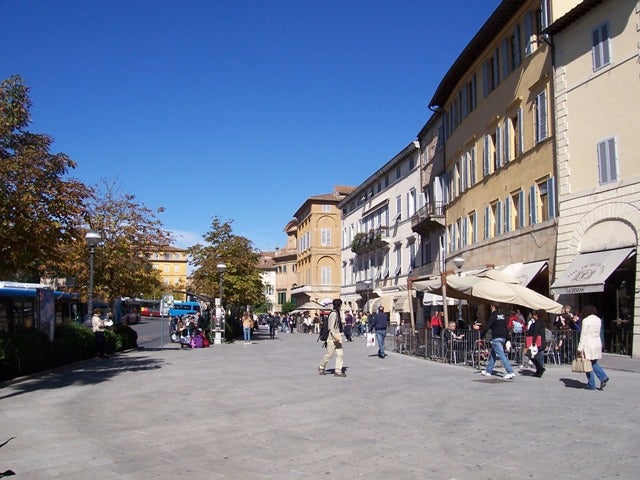
The tiny town of Monteriggiano, another medieval fortress just northeast of Siena built in 1202 to provide a speed bump to invading Florentine armies, the entire infrastructure seems to be comprised of two things: massively thick, high stone walls – and the piazza, where a half dozen restaurants engage in blatant price-fixing and friendly competition for tourists’ lunch dollars. Its one church, central to the piazza, is unusually unadorned for this part of the world, a refreshing plain elegance amid the breathtaking countryside seen from atop the town’s walls.
These places are almost literally too beautiful to behold. From the uniform cornice line and soaring churches throughout the streets of Rome and the Vatican to a row of cypress trees on a gold dirt road, lining a hill to an amber-stucco Tuscan villa, amid dozens of acres of rolling vineyards, one’s eye can’t seem to rest in Italy.
So that’s when you stop, in the piazza, for a glass of cool Vernaccia white wine, from the surrounding hills of San Gimignano, or a reliable Chianti. Or a scoop or two of gelato. A simple bottle of water works, too. You sit down, your feet sing “grazi,” and you are planted in a calm haven of stone and brick and flesh and blood.
Gazing out from the top of Siena’s campanile, exhausted from the climb up the ancient tower and taking in the town and countryside, our hearts almost stopped when the bottom of the hour was sounded by the massive bell just a few feet above our ears.
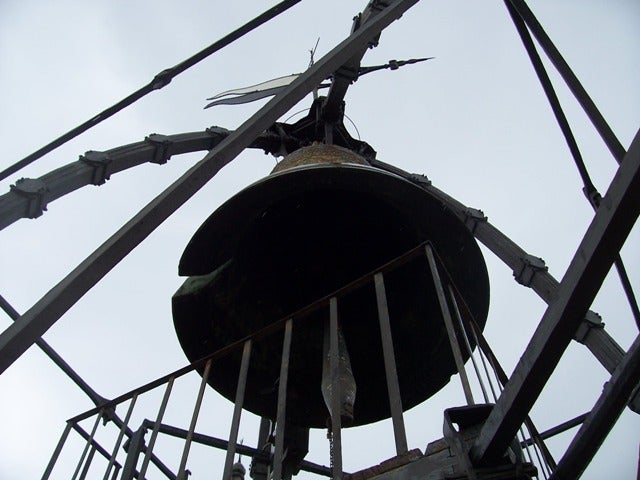
But we were glad it thundered out. Otherwise we might not have spotted one very dominant characteristic of that bell, shared by a distant cousin in the New World. A crack, wide enough now that it could fit a catcher’s mitt, graces its lower half and has rent the side of the bell to the point where it appears it will be torn asunder, forever.
Contact the reporter at thomaswalsh1@gmail.com.
WHYY is your source for fact-based, in-depth journalism and information. As a nonprofit organization, we rely on financial support from readers like you. Please give today.



